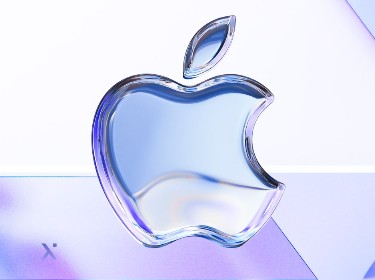There’s an ongoing debate around how progressive web applications offer a more unified experience and are bound to supersede native mobile apps. But that’s not to say that iOS and Android apps don’t have their own advantages for businesses, developers and users.
Mobile apps have become crucial assets of our everyday lives. Without them, we are stripped from communicating with friends, buying pizza and favorite take-out food, binge-watching a favorite show on Netflix, taking pictures of our lovely pets, and lots of other things. Hell, we can’t even pay our bills without the seamless experience given to us by our devices. Nowadays, we spend more time using our smartphones than we do on laptops and PCs. And according to eMarketer out of the four hours per day mobile users spend on the web, 90% of that time is spent on apps.
Ever since touch-based devices hit the scene and the introduction of the App Store and Google Play, mobile users have become very picky when it comes to an application’s user experience. Native mobile apps provided a much more intuitive and attractive interface than websites. The websites always lagged behind as they weren’t as optimized for different screen sizes and provided fewer features. Over time, however, this has changed and web applications became more adaptive and responsive. Progressive web applications (PWA) took it to the next level and brought the mobile web experience very close to that of a native app.
Read on to find out more about the PWA vs native app face-off, understand the differences between these two approaches from the business and the developer’s perspective, and discover which is best for your next project.
What is a native app?
Native apps are designed for a specific mobile platform which is iOS or Android. They make the most of the device’s capabilities and can tap into all the features of your mobile phone – from contacts and SMS to Bluetooth, camera, and biometric authentication. Native apps are distributed through the App Store and Google Play and need to follow the guidelines of these marketplaces. They also need to be downloaded and installed on your device and they take up a solid portion of your system resources.
The native code of the app interacts directly with the device’s operating system, allowing it to run smoothly with maximum performance. The look and feel of the app are guaranteed to fit with your overall mobile phone user experience, and interactions will seem natural. This is because a native application is built specifically for your platform. These apps have separate versions for Android and iOS created independently of each other. Therefore, some features from the iOS app may even differ from the Android experience.
What is a progressive web app?
![]()
PWAs provide an alternative development approach. Basically, they are websites that have the appearance of a native mobile app. They work with the browser hidden in the background which is often referred to as having headless architecture. This means that they do not display the browser window with a search bar and instead provide an app-like UI. Unlike a native app, a PWA does not have to be installed on the device and takes up much less space.
One of the notable features of PWAs is that they can be added to the home screen. Because of their architecture, which we will dive into a little later, progressive web apps can work under tough network conditions and even operate offline by caching data and storing it in memory. Moreover, a PWA can save the application’s state from session to session, and with the help of recently developed APIs, it can also access the phone’s geolocation, camera, payments, and other features (although with some limitations).
Native apps: business point of view
There’s no doubt that with a native mobile app you can offer the best UI/UX experience to your customer base. Modern native designs allow you to create eye-catching intuitive layouts and lively animations. Neither are you bound by any restrictions when it comes to the mobile phone’s latest hardware and software features. Let your users interact with each other via social media, wow them with the added value of augmented reality, let them import their contacts and make calls. All this comes with a price though, as developing native apps isn’t cheap.
You will need different teams for the iOS and Android platforms. In addition to building two versions of the app, you’ll also need to go through a process to submit your app to the App Store, Google Play, and any other additional platforms you are targeting, such as Windows and Amazon Appstore. Each store has its own requirements and you’ll also have to invest in App Store Optimization (ASO). ASO involves writing a convincing app title and descriptions, putting up quality snapshots that demonstrate the app’s great UX, and fitting the app into relevant categories.
A good selling point for native apps is the possibility of monetization. You can easily integrate payment processing with the user’s app store account, allowing you to implement in-app purchases and subscriptions. This is much more convenient than having to introduce a stand-alone payment system for a web app.
With native apps, you have more options in terms of security. It’s easier to implement multi-factor authentication when you have access to all the device information and have no problems making use of Touch ID and Face ID features. You can also integrate more sophisticated security features such as certificate pinning. People tend to have more trust in apps that came from the store, as they have to pass the store’s security guidelines as well.
Ultimately, native apps will always be the frontrunners in picking up new features as devices gain more capabilities. Being so in-tune with the device operating system, these applications can easily be scaled to introduce new functionality provided by the hardware. Progressive web applications, on the other hand, will have to wait until an appropriate API is cooked up by SDK developers.
How to Build an Insurance App That Will Turn the Industry on Its Head
PWA: business point of view
A celebrated quality of progressive web applications is that they only need to be developed once and can be accessed across all platforms from the web. This means you only need one development team and can seriously cut down on expenses. In most cases, if you already have a website, then you can just build your PWA from there, which gives you a great head start. Making updates to a web app is much easier than it is with native apps – you only need to update the application on your server and users will instantly be able to use the new version.
Unlike native apps, PWAs are much less demanding on the performance and capabilities of devices. They can work on practically any platform. Since there’s no difference between versions of the app for Android and iOS, you can create a single app to satisfy multiple customer segments and provide a unified user experience for all. This works especially well with users who often tend to switch between devices and platforms as they are able to access your app without having to restore their settings and data.
It is also convenient for enterprise use cases. Companies can trust that their employees have software that performs seamlessly across all endpoints and in all work environments. Responsive and adaptive design is a trademark of PWAs, so they can perfectly fit any screen size or device form factor.
A downside of progressive web apps is limited access to hardware features. They only support features enabled with API provided in HTML5 JavaScript libraries. For instance, on iOS devices, features such as Face ID, Touch ID, in-app payments, ARKit, and Siri are either not yet available or limited.
PWAs are known for excessive battery consumption. This is because the app depends on and heavily uses the internet connection, and it also relies on API calls to interact with other device features. This results in more resources spent on the app’s operation, which drains the battery faster than a native app would. Consider this when deciding to build your PWA.
On the bright side, acting as an extension to your website, a PWA benefits from SEO optimization, so you won’t need to take any additional promotional steps to get the app to its users. Your current users will be asked if they would like to place the app on their home screen, and new visitors will inevitably come from relevant search results. Google even ranks PWAs higher than traditional websites as part of their mobile-first policy.
Figures showing the value of PWAs for business
The PWA Stats portal keeps tabs on the successes of PWAs across a wide variety of industries, including fashion, dating, apparel, food, travel and social media. Let’s have a look at how businesses managed to extract value from introducing progressive web applications.
| +162% Conversions | Rooted Objects, a fashion brand, experienced a surge of 162% in conversions following the launch of their PWA. Page load times reduced by 25% while the average redirection time dropped by 80%. |
| From 11.91s to 4.69s in Load Time | Tinder cut down its load time from 11.91 seconds to 4.69 seconds with their PWA, which is 90% smaller than their native Android app. Since then, user engagement has increased dramatically across the board. |
| +60% Engagements +44% Ad Revenue +40% Spent on Site |
Pinterest transformed their mobile site into a PWA, leading to a 60% rise in core engagements. The result: a 44% increase in ad revenue, as time spent on the site went up by 40%. |
| 2x Increase in Daily Users | Starbucks saw a two-fold increase in its daily users as their PWA took centre stage. As a result, orders placed from desktops are now almost equal to orders placed from mobile phones. |
| 2s Load time on 2G | Uber designed its PWA for maximum performance even on 2G. The core app boasts a minimal 50K ‘gzipped’ size and loads in almost 2 seconds on 2G networks. |
PWA vs native apps: tech stack and development
Native apps have their own set of technologies for each platform. Android apps are built with either Java or Kotlin using Android SDK and the Android Studio environment. The iOS tech stack includes Swift and Objective-C coupled with either XCode or AppCode toolkits and the iOS SDK.
Managing two different codebases can be quite challenging, and, needless to say, very costly. You are practically building two separate applications. Code that is written for one platform can’t be easily translated and tailored for the other platform. Maintaining native apps isn’t a simple errand to run as patches and updates have to be run through the app stores.
Progressive web apps are created using the well-known HTML5 and JavaScript development stack that includes frameworks such as Angular, React, and Vue. A team that offers professional web development services is much less hard to find compared to iOS and Android developers.
According to the latest Stack Overflow survey, Javascript is at the top of the list of most commonly used languages. Plus, JavaScript developers have lower per-hour rates, so you will definitely see a benefit in development costs, even if you were planning to target only one of the mobile platforms. The same Stack Overflow survey shows that Kotlin and Swift developers are higher paid than Javascript developers.
Inspiring examples of PWA projects
![]()
Over the few years since their first introduction, PWAs have helped many brands increase engagement with users and improve their experience. The development of modern web standards and technologies has pushed momentum forward and now these applications can perform much better and take advantage of more features provided by mobile devices. Let’s take a look at some inspiring PWA examples driving business success.
Twitter Lite provides a simplified and extremely fast version of the popular social media application. It provides most of the features of the original native version, including the eye-catching animations, while at the same time preserving mobile data usage. The app optimizes images, maintaining quality while using smaller files, and maximizes cache data usage. The introduction of a lighter app came from the motivation to attract more users from markets with slower internet speeds and less powerful devices with a variety of older OS versions.
The new app works very well under low bandwidth conditions. Its size is only around 600KB which is nothing compared to the dozens of megabytes for the native app version. Twitter also implemented push notifications for their PWA that work just as well even if the app and the browser are closed. These notifications allowed the creators to engage with the new market of Twitter Lite users.
Spotify also made the move to progressive web applications. Music lovers all over the world can now also enjoy a PWA version of the app. Spotify initially created the app to avoid high fees on the App Store but continued its development as it garnered its own user base. The PWA works much faster than the native app version and offers a unique adaptive UI. The background of the app changes according to what music a person listens to and as they navigate through the PWA. By allowing users to add it to their home screen, Spotify’s progressive web app rivals the native app in providing the best experience.
The Weather Channel is always looking for new ways to stay ahead of the competition and be the best weather reporting provider. They saw PWA technology as a great method to provide timely and accurate weather reports even to regions where people don’t have access to high-speed internet and where the fees to download the app might be too high for the average user. They also wanted the app to run smoothly on all mobile devices, even the older models.
By introducing their PWA, the company was able to deliver the app in 62 languages and to 178 countries, all within one version and a single code base. This way they seriously cut down the expenses of developing separate apps for each mobile platform, and as a bonus they saw an 80% increase in load times compared to the older versions of the app.
Lancôme, a leading luxury cosmetics brand, wanted to provide a unified experience, boost traffic to their website, and increase sales on all fronts, including mobile. They chose to implement their PWA with the hopes of improving conversion rates. As a result, they’ve got more than they bargained for with a mobile-friendly progressive web application that works even in harsh network conditions and engages customers with push notifications. The luxury brand saw a 50% increase in mobile sessions and a 17% boost in conversions.
Letgo is a second-hand reseller marketplace that targets clients from the US. They went all-in with their progressive web app, deciding to completely avoid building native applications for Android and iOS. The app they built provided a great experience across all devices and proved to be a huge success. Their target audience really liked the way they could get the native app look and feel without having to actually install the application, thereby saving device memory.
Choosing between native app and PWA development
Reasons behind opting for native app development are evident, as they provide the ultimate experience with a seamless UI/UX that is tailored to a specific mobile platform. Native apps through Flutter app development services also boast high security and scalability as they are able to tap into the latest features and capabilities of mobile devices and their respective OSes. However, with these perks come the downsides of higher costs for building separate applications for each platform, and having to compete with an established market of existing applications on the App Store and Google Play.
We recommend going for native app development in the following cases:
- If you plan your app to actively work in the background
- If you need maximum integration with the device hardware
- If you are looking to benefit from an app store presence
- If you are developing a game and plan to use augmented reality
- If you want to offer subscription and in-app purchases.
PWAs, on the other hand, are a good choice if you have a web presence and need a simple mobile app to interact with your customer base. Especially, when you have time and money constraints or are looking to create an MVP to test out some features and get immediate feedback from your users. A progressive web application is also a good way to improve your SEO rankings since mobile-first websites are favored by Google. Overall, adding a PWA can only improve your reputation and brand awareness as it provides an additional channel to interact with customers.
We recommend PWA development in the following cases:
- If you need to avoid the constraints and requirements of the app stores
- If you have a limited initial budget and would like to gradually add features
- If you are looking for a cross-platform solution to reach a wider market
- If you don’t need to use features exclusive to the device’s hardware
- If you want to provide an identical experience on your website and the app.
Conclusion
PWA is definitely attractive for businesses that would like to jump to market more quickly at minimum expense. At the same time, native apps still act as a token to a company’s credibility. Ultimately, if you have the resources to build both web and mobile app platforms, we encourage you to do so, as that way you’ll be able to provide more opportunities for users to interact with your brand.
Creating a winning experience across all fronts will allow you to capture audiences from the App Store, Google Play, and traditional web surfers. Having a product that is represented across several markets is always a boost to conversions and sales.
Creating that same experience across all devices, maintaining them, and keeping them in sync, however, can prove to be a challenge. Partnering with an experienced mobile application development services specialists will help in choosing the right set of technologies, designing the app layout, performing efficient UI/UX design services, and drafting an optimized plan and schedule for deployment. Seasoned developers may also be of great help when going through the procedure of getting your apps to the App Store and Google Play.
Here’s how PixelPlex can help:
- Mobile app development
- Cross-platform app development
- Android app development services
- iOS app development services
- Accessible web development
- Research and development
- Technology consulting




